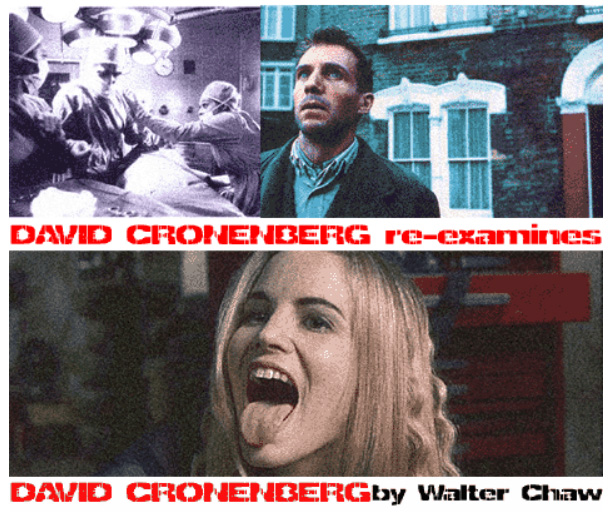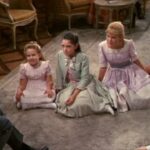****/**** Image B Sound A-
starring Dennis Quaid, James Caan, Meg Ryan, Gwyneth Paltrow
written and directed by Steve Kloves
by Walter Chaw Steve Kloves’s follow-up to his exceptional The Fabulous Baker Boys is Flesh and Bone, a dark-hued journey through the Southern Gothic that represents career pinnacles for Meg Ryan and (until The Royal Tenenbaums) Gwyneth Paltrow. That Flesh and Bone–a doom-filled piece that glowers with malevolence from its horrifying opening sequence to its unsettling conclusion–never received a great deal of attention upon its initial release isn’t as much of a surprise as the fact that not even the passage of time has cemented it as a minor classic. There are few pictures more deserving of critical revisionism.
Arliss (Dennis Quaid) is a travelling vending machine repairman/stocker who one day picks up drunken stripper Kay (Meg Ryan). Feeling like destiny as writ by Flannery O’Connor (pervasive and grotesque), Kay leaves her husband to join Arliss on his travels across the great big emptiness of Texas, confronting along the way the demons haunting both their pasts. James Caan is terrifying as Arliss’s manipulative father, the reunion with whom is the stuff of dark fairytales.
Quaid is intricately textured and haunted as Arliss, playing him as a man who walks like he’s got a gun on him–and in a karmic sense, the hammer is, indeed, always about to fall. More surprising is Ryan: With few exceptions, she’s made a career of scrunching up her face and mugging for the camera in unforgivable and hateful romantic comedies. But as the beaten Kay, her essential perkiness takes on a haunted edge; it’s one thing for an Annie Hall-clad Sally to wax rhapsodic (and continuous) on any number of banal topics–it’s another altogether for an abused stripper to assume the same airy façades. Credit Kloves for a screenplay that first recognizes Quaid and Ryan’s strengths (his warmth, her cutesiness), then undermines them in subtle and disturbing ways.
Flesh and Bone is an uncompromising and thoughtful examination of the insidious ways in which the sometimes-literal sins of the father infect the lives of subsequent generations. It is poised and contemplative, its sparse dialogue landing like blows to the expansive beauty of nothingness. Phillippe Rousselot’s breathtaking cinematography is worth mentioning for its economy of story and visual poetry, evocative of similar work done by Néstor Almendros in Terrence Malick’s aching Days of Heaven. The extreme flatness of pasture and highway stretching forever to every horizon strikes at the very heart of the futility of action that informs Arliss and Kay’s careful orbits around one another and their troubled histories. For as elegant as Kloves’s screenplay and the ensemble are, so too is the landscape itself, entropy made manifest in the blasted plains of our collective pastoral past. In this stillness, Flesh and Bone recalls Bogdanovich’s The Last Picture Show–or, more to the point, the Coen Brothers’ Blood Simple.
One of the great forgotten films of the 1990s, Flesh and Bone is, sadly, Kloves’s last film as a hyphenate to date (he’s been relegated of late to screenplay adaptations–one good (Wonder Boys), one not (Harry Potter and the Sorcerer’s/Philosopher’s Stone))–no doubt banished from behind the helm for the box-office failure of this film. Yet Flesh and Bone is as haunting, elegiac, and marvellous as Willie Nelson’s “Stardust” (a tune played at a few pivotal points in the action); for me, there aren’t many things more laudatory I can say about a picture.
THE DVD
Paramount’s 1.85:1 anamorphic widescreen DVD transfer of Flesh and Bone starts with mute and murk (with intrusive edge enhancement) but evens out after the prologue. I’m inclined to say, at the risk of being labelled “apologist,” that the roughness of its opening actually aids in the establishment of the film’s mood (Erik Skjoldbjærg’s fantastic Insomnia begins the same way–but on purpose). Still, although haloes do recur periodically, I was thrilled by how rich Flesh and Bone looked, the video all the more impressive for the age of the elements and relative obscurity of the film itself. The Dolby 5.1 mix preserves a model of early multi-channel digital soundtracks: Dialogue is clear, Thomas Newman’s lovely score is reproduced with fidelity, and ambient effects inform throughout. There are no extras to speak of on this disc.
126 minutes; R; 1.85:1 (16×9-enhanced); English DD 5.1, English Dolby Surround, French DD 2.0 (Stereo); CC; English subtitles; DVD-9; Region One; Paramount






